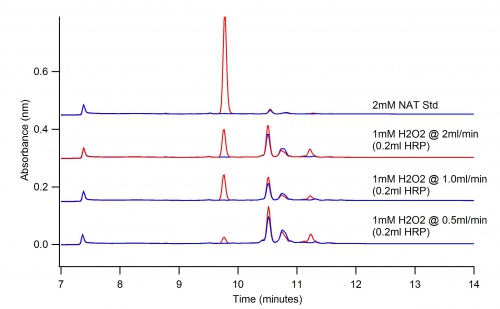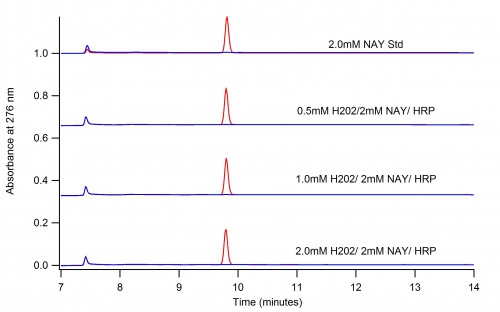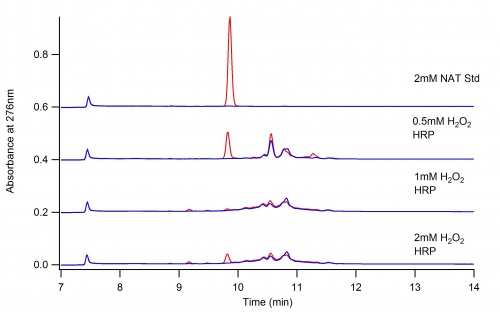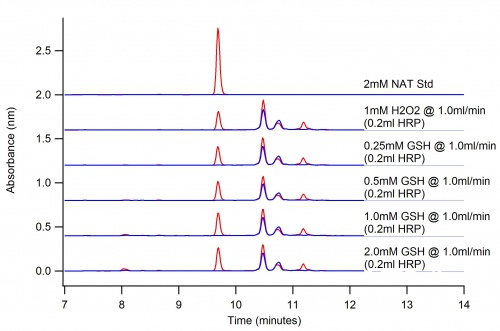Difference between revisions of "N-Acetyl L-Tyrosine"
Benstillwell (talk | contribs) |
Benstillwell (talk | contribs) |
||
| Line 1: | Line 1: | ||
| − | This page depicts the oxidation of N-Acetyl L-Tyrosine (NAT) by Horse Radish Peroxidase (HRP) | + | This page depicts the oxidation of N-Acetyl L-Tyrosine (NAT) by Horse Radish Peroxidase (HRP). Each sample of NAT was dissolved pH 5 phosphate citrate buffer. The method used on the HPLC was "HPA_0604156". |
[[File:NAT.png|200px|thumb|none|NAT]] | [[File:NAT.png|200px|thumb|none|NAT]] | ||
Revision as of 16:51, 21 July 2016
This page depicts the oxidation of N-Acetyl L-Tyrosine (NAT) by Horse Radish Peroxidase (HRP). Each sample of NAT was dissolved pH 5 phosphate citrate buffer. The method used on the HPLC was "HPA_0604156".
The Dioxane Conundrum
The following two graphs depict the difference in reaction when dioxane is present and when it is not. The conclusion is that dioxane quenches the oxidation of NAT.
Beaker Reaction vs. Immobilized Enzyme Bio-Reactor

Concentration Test
These graphs depict the difference in concentration of NAT and H2O2. Increasing the concentration will help to obtain more products.
Flash Chromatography
The objective of flash chromatography is to isolate peaks seen in the HPLC. Running flash chromatography allows for the product to be isolated.
Antioxidants in Reaction
The following graph depicts the oxidation of 2mM NAT by H2O2 with various concentrations of ascorbic acid in pH 5 buffer.
The following is the oxidation of 2mM NAT by H2O2 with various concentrations of reduced GSH in pH 5 buffer.







